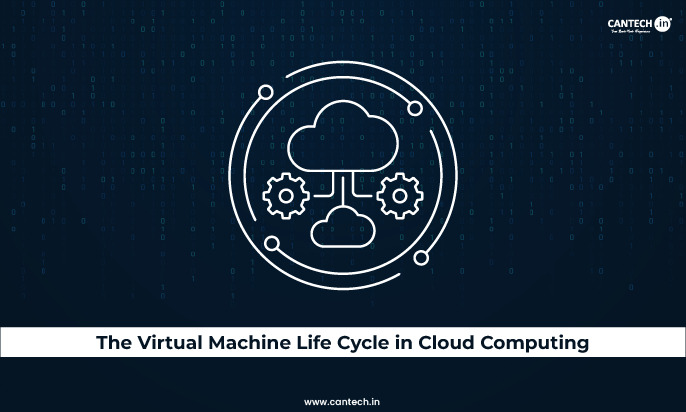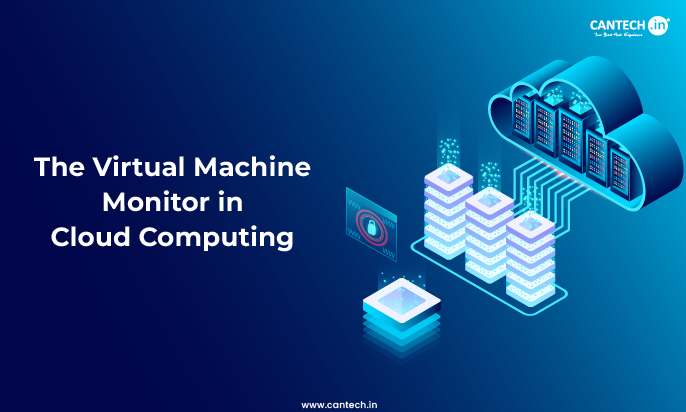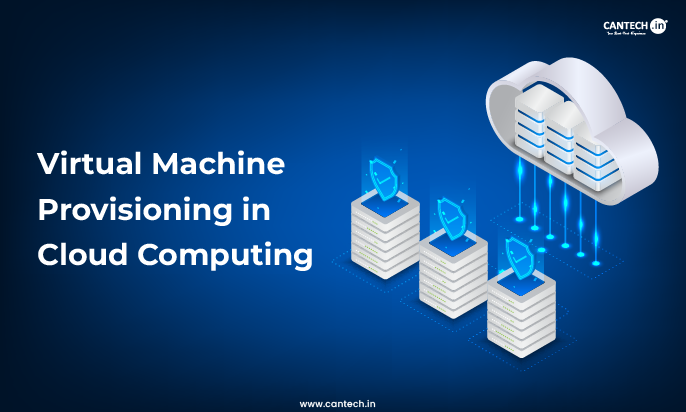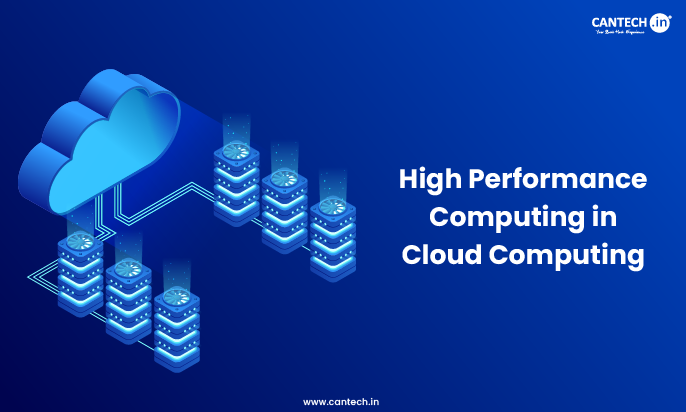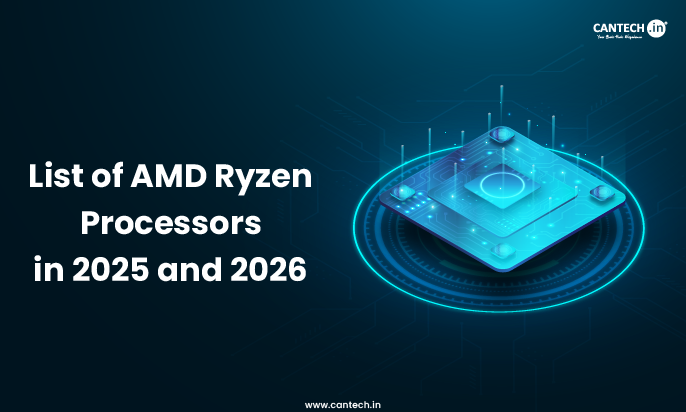Imagine the ability to produce an exact duplicate of a computer at any stage of need. This kind of system can be deployed within minutes, used to perform a specific task, and, at the conclusion of it, it can be decommissioned. This is how it is in virtual machine management in a cloud environment where an excellent understanding of the overall process of a virtual machine life cycle can be used as a guide to improving cloud efficiency, ensuring security, and cost optimization.
The virtual machine life cycle is used to identify all the steps that a VM goes through, starting with creation and ending with decommissioning. This is not a technological exercise; it is a planned process that ensures that the cloud resources are launched in a consistent manner, managed, and secured in a comprehensive way. To any person in charge of cloud infrastructure, it is important to master this cycle to enable the potential of the cloud.
This guide is aimed at guiding the reader on the path of every stage of the VM life cycle. It looks at the origin of VMs based on templates, the daily operations of a VM, and the protection measures in case of negative events. The reader will learn effective tactics in each of the stages, thus changing the management of the cloud environment.
Creation and Deployment
Any virtual machine is originated as a conceptual need. A server can be required to support a site, a database, or to process data in an organization. This need becomes a running reality in the deployment phase. The steps to this process are initiated with a critical choice: on what basis do we build the VM?
The VM image is the base. An image is a fixed file that contains a pre-configured operating system, and can be packaged with applications and settings installed. One can compare it to a golden master copy or a cookie cutter. The use of images ensures uniformity and time-saving. Instead of building an operating system each time, deploying an operating system can be done out of a standardized image that meets security and configuration requirements.
Cloud providers often provide marketplaces which have standard operating system images (windows server, and various Linux distros) pre-built. In the case of most organizations, the best thing to do would be to design custom images. These golden images are hardened according to the company security policies and have the required agents to monitor and manage them. This method makes all new virtual machines enter the world in a safe and non-violent condition.
The actual deployment process is so very simple. One can choose the custom image through a cloud management portal or an automated script. One then defines the size of the virtual machine, which dictates the virtual CPU of the virtual machine, memory and storage. One then configures network settings, attaching the VM to the corresponding virtual network and attaching the corresponding security groups. The cloud platform spins the new virtual machine with one command or a single click and it is ready to use after a few minutes.
Configuration and Management
After a virtual machine has been started, it passes to the management phase. This is its greatest part of the life cycle whereby it is carrying out its intended purpose. Managing is not a one-time affair but a process of control, servicing and streamlining.
The major important task is configuration management. Although a virtual machine may be deployed using a golden image, it may still need certain configuration to serve its distinctive purpose. These include installation of role-based software, creation of user accounts and elaborate security policies. Automation tools like Ansible, Chef or Puppet are strongly advised. These tools will guarantee consistency, repeatability, and documentation of configuration, which will overcome configuration drift in which servers will slowly become unique, hard to manage systems.
This will provide the required transparency to manage the state of health and performance of virtual machines (VMs) through continuous monitoring. Cloud solutions provide inbuilt mechanisms of monitoring metrics like CPU usage, memory pressure, disk I/O and network traffic. It is necessary to set alerts on these measures. The administrators may be alerted when CPU utilization is over ninety per cent and left unchanged over a long period of time, allowing them to probe performance problems before they affect the users.
Maintenance is a mandatory aspect of management. It mainly entails use of security patches and updates of OS and programs. Manual patching is not doable in a dynamic cloud environment. Based on this, an automated patch-management plan is supposed to be adopted. This could involve having cloud-native capabilities or third-party products to scan VMs on a periodic basis and apply patches within scheduled maintenance periods.
Protection and Backup
The security of the virtual machines is a matter of life and death in the lifecycle. In cloud applications, the customer is left to protect the data that is contained in the VM. The protection strategy must include a strong defense mechanism that includes backups.
VM backup solution involves making and storing the copies of the VM data which can be rescued in case of corruption, any accidental deletion or ransomware attack. Modern cloud backup systems do not simply copy files, but create a snapshot of the whole disk of the VM, and thus provide the full system state, allowing it to restore it quickly and completely.
A 3 2 1 rule is the basis of the effective backup strategy. Keep your data in at least three copies. Keep these copies on two different media copies. Retain one copy off‑site. On the cloud, this principle is equivalent to having numerous copies of backups, possibly with a different level of storage, and in a geographically distinct location to where the running VMs are.Backups should be automated and tested regularly. A backup is only as good as your ability to restore from it.
Along with backups, there must be other protection mechanisms. All virtual disks should have encryption to protect rest data. The use of anti-malware systems and antivirus systems that are cloud-operated will secure the virtual machine against internal threats. Lastly, a properly designed network is a form of defense. The attack surface of a virtual machine is also significantly decreased by blocking all unnecessary traffic with the help of network security groups.
Optimization and Scaling
An optimally coordinated virtual machine is not something static. It will develop its resources as time goes by depending on the need of the application. The optimization is the stage of the constant right-sizing and scaling of virtual machines to match the cost efficiency with performance requirements.
Rightsizing is the process of examining the real utilization of resources by a virtual machine and then, resizing it. One of the common occurrences in a cloud setup is an over-provision. A virtual machine can be configured with eight virtual CPUs but only two of them may be used. This translates into unnecessary spending. With such optimization as reducing the size of the virtual machine to a smaller and more cost-effective size, it is possible to maintain performance at very low costs.
The equivalent of right-sizing is scaling. In case a virtual machine is always heavily utilized, then the resources might be needed. There are two major scaling techniques of cloud platforms. Vertical scaling refers to an adjustment in the size of the virtual machine including adding additional CPU or memory to the existing machine, which can frequently require a reboot. Horizontal scaling is more of a cloud-native solution. It is whereby more instances of the virtual machine are added to a pool behind a load balancer in response to increased traffic, and hence, making the application elastically scale to meet the demand.
The key to scaling is automation. Auto-scaling policy may be set according to such metrics as CPU utilisation. As an example, one may configure a rule to be added to the group whenever the overall group CPU usage is more than seventy percent in five minutes.
Retirement and Decommissioning
Everything has its life cycle; virtual machines cannot be an exception. Retirement is the last stage in their lifecycle and this happens when a VM becomes unnecessary. It could also have had its workload offloaded to another location, the project it was servicing could be complete, or it could have been replaced by a more up to date solution.
Poor retirement of VMs leads to a process called VM sprawl in which inactive, idle VMs accumulate in the cloud platform. These orphaned VMs keep having costs on compute, storage and software licensing. Worse off, they are often unpatched and monitored, thus presenting a great security risk.
Formal decommissioning process is unavoidable. This must start by stating the fact that the VM is actually no longer in operation. All information should be stored as per corporate data storage regulations. The final process is shutting down the VM and destroying all the related resources such as virtual disks, network interfaces and any publicly accessible IP addresses. It is not enough to switch-off a VM, and the storage expenses will remain.
A resource tagging strategy makes decommissioning very easy. Tags are metadata labels applied on VMs such as owner, project or cost-center. Follow-up reporting will be able to detect all VMs that are associated with a project that is already done, and thus, make it clear which to retire.
The Human Factor: Control of the VM Life Cycle
People and policies are vital to the success of the VM lifecycle, although it is a technical process. Entering a clear governance will differentiate a chaotic cloud environment and an effective one. Governance refers to the system of rules, functions, and accountabilities that guide the management of VMs in the lifecycle.
The first step is to determine who has the right to develop virtual machines. A developer may decide to test the large virtual machines in a poorly managed environment thus ending up paying unexpectedly. The use of role-based access control systems will ensure that only authorized individuals are allowed to mobilize resources, and only within defined limits. As an illustration, a developer can be allowed to make only cost-effective virtual machines of a given size in a non-production environment.
In addition, governance includes implementation of standards. It is against this background that Infrastructure as Code becomes a powerful tool. Instead of having users clicking the buttons in a portal, one can require that all virtual machines be instantiated by using code templates. Such templates will impose security configurations automatically, tag the appropriate tags and pick a suitable size, thus removing human error and making sure all the virtual machines are in compliance.
Financial Viewpoint
Each phase of the life cycle of a virtual-machine has a direct cost implication. It is critical to look at the cycle in terms of finance in order to control one cloud expenditure. The initial deployment cost is apparent, but the unknown costs lie in the constant process of managing and, most importantly, failure to retire.
Over-provisioning is a major fiscal hazard that is evident during the management phase. A virtual machine can be over-provisioned with resources so as to be safe. This is similar to the cost of renting a semi-truck when one needs a sedan to commute to and work daily. Periodic right-sizing workouts, say quarterly, are essential to detect and shrink these over-provided virtual machines, and hence to achieve immediate cost reductions.
The most heinous financial leak-off, however, exists at the retirement stage in the form of virtual-machine sprawl. Even when not in use, a forgotten virtual machine will still incur storage charges on virtual disks. In months or years the cost of keeping dozens of such inactive virtual machines can be unbelievable.
Advanced Protection: Beyond Basic Backups
When it comes to the protection phase, backups aren’t enough. For business-critical applications, sophisticated data protection strategies are inevitable. This is where data replication and disaster recovery strategies come into the picture.
Replication is creating a near-real-time copy of a live VM in a different geographic location. While backups are like taking a daily photograph, replication is like streaming a live video to another location. In the event of an outage at the primary data center, the replicated VM in the secondary region can be powered on immediately. This process is called a failover. Nothing beats business continuity and a recovery time objective of minutes versus the hours it would take to restore from a backup.
Application-consistent backups are another advanced concept in data protection. Imagine a simple snapshot capturing the VM’s state while an application is in the middle of writing to a database. That can result in data corruption upon restore. Application-consistent backups take a snapshot only after all data is flushed to disk and in a steady state, guaranteeing a clean recovery.
The Green Imperative: Sustainability in the Life Cycle
The cloud computing model is made possible by physical data centers, and optimizing the life cycle of virtual machines (VMs) is also a way to be eco-friendly. The reasoning is straightforward: the fewer physical servers that are operational, the less power is used.
This is most evident during the optimization stage of the life cycle. Cloud service data centers consume less power when aggressive right-sizing is done, and non-production VMs are powered down during late nights and over the weekends. Moreover, a strong decommissioning policy that ensures VMs are deleted and not merely powered down releases physical storage arrays and the power needed to operate them.
The green cloud computing model embraces eco-friendly practices throughout the VM life cycle. This, in turn, lowers the emissions that an organization is responsible for. The organization, thus, fulfils the technological aspect of its corporate social responsibility, while simultaneously achieving cost savings.
The Future of the Life Cycle: Serverless and Beyond
In this model, the entire life cycle has been reduced to mere milliseconds. A “VM” is conjured to respond to an event, runs the function, and is disposed of. You are charged only for the function’s execution, and nothing for the time the resources are idle. While it does not make the VM life cycle obsolete, it certainly redefines its boundaries.
There is no longer any need to prioritize the management of over-provisioned, idle, and long-lived back-end servers but rather the management and orchestration of fleeting, event-driven functions, which positions the system at the cutting edge of cloud resource management.
Conclusion: Mastering the Cycle for Cloud Success
The life cycle of the virtual machine is a repeating cycle of creation, management, protecting, optimizing, and finally, retiring. Looking at your cloud infrastructure this way would change your operations significantly. It shifts you from the reactive, tactical firefighting approach and places you squarely at the center of proactive, strategic managerial control.
The coordinated execution of disciplined practices at each phase results in impressive outcomes. You regain control on costs: waste from over-provisioning and VM sprawl reduces costs. Legal mandates are easier to abide in with the systematic strengthening, patching, and timely decommissioning of your resources. Reliability is critical, and it is ensured with comprehensive backup and scaling plans.
Mastering the VM life cycle is not just about technical execution. It is about building a culture of cloud excellence. It empowers teams to be agile and innovative, knowing their infrastructure is resilient, efficient, and secure from the moment a VM is born until its work is done.


